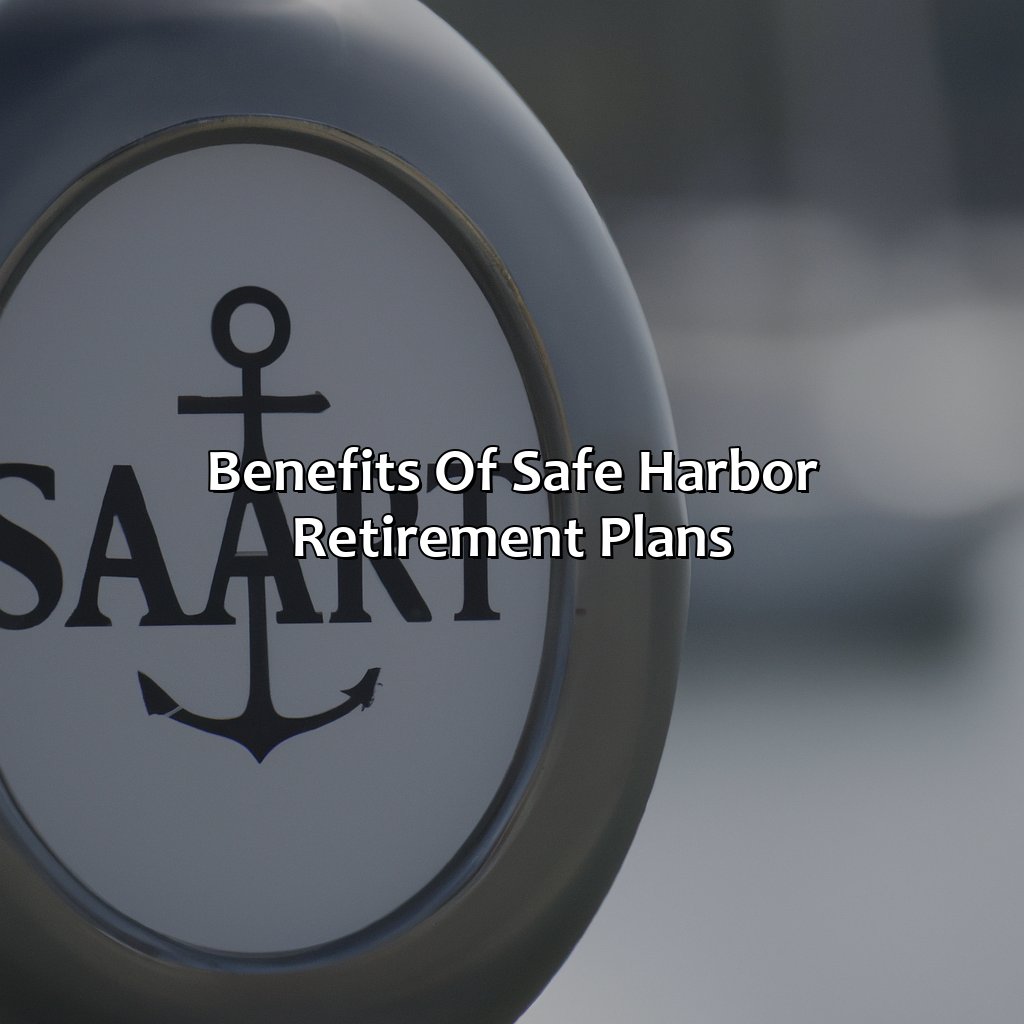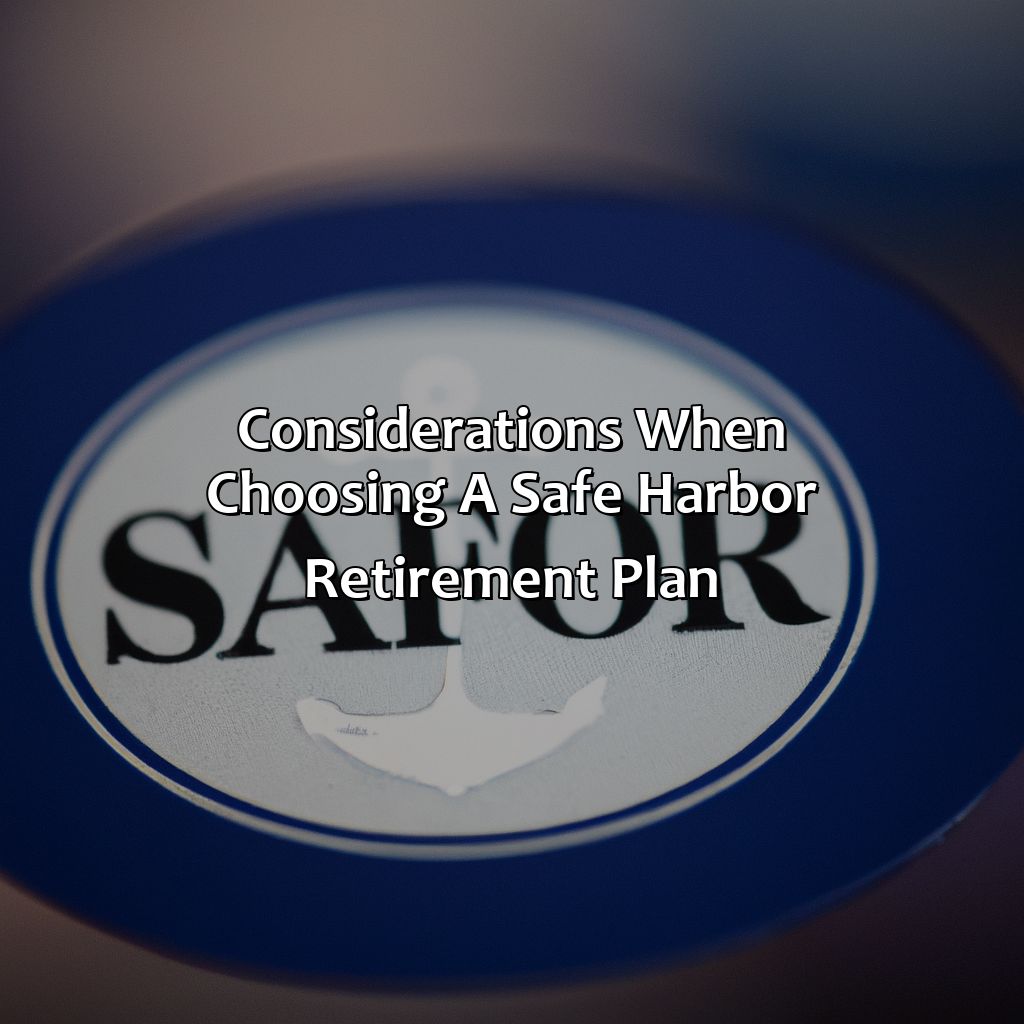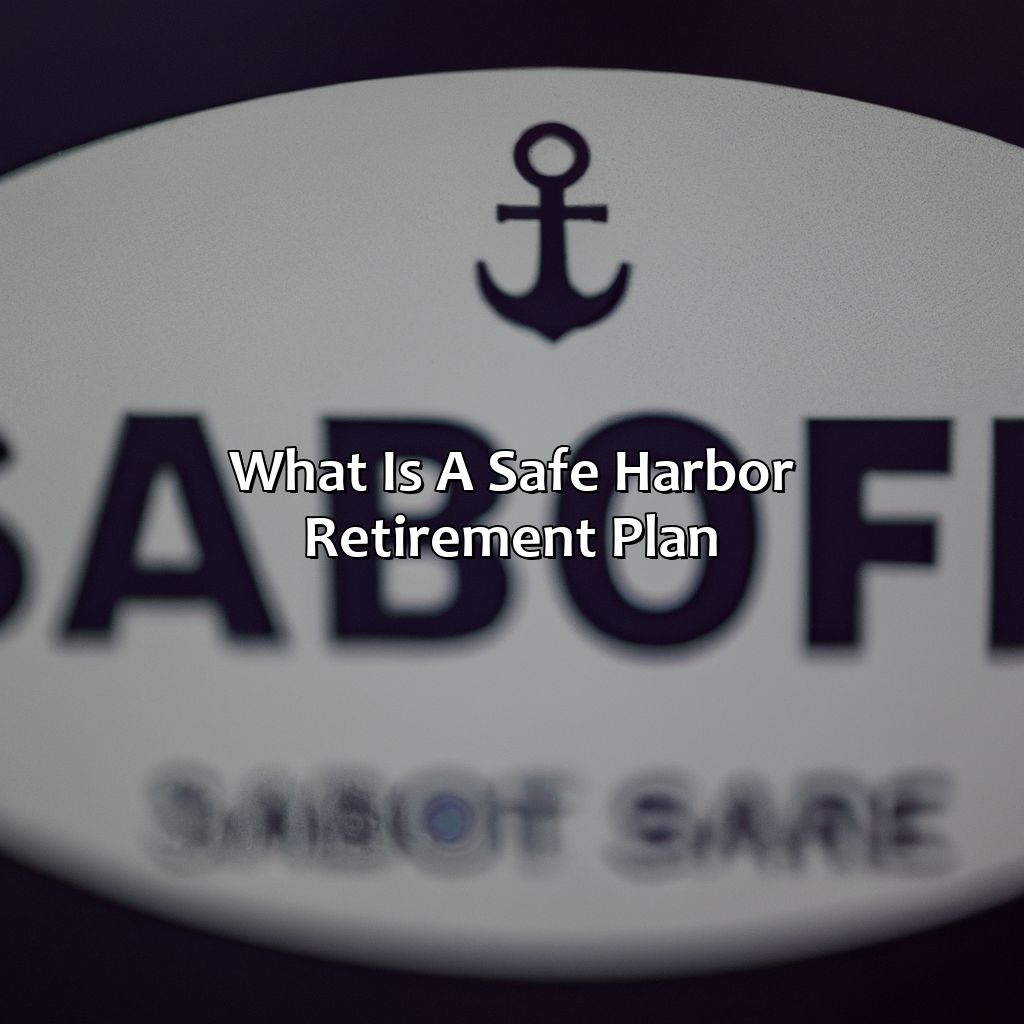What Is A Safe Harbor Retirement Plan?
Key Takeaway:
- A Safe Harbor Retirement Plan is a type of retirement plan that is designed to automatically meet certain IRS nondiscrimination requirements, which can help employers avoid costly penalties and compliance errors.
- Safe Harbor plans offer many benefits, including increased contribution limits, additional flexibility for highly compensated employees, and compliance with IRS regulations that can help ensure fair treatment for all employees.
- There are three main types of Safe Harbor Retirement Plans, including Matching Contribution Plans, Nonelective Contribution Plans, and Qualified Automatic Contribution Arrangement (QACA) Plans. Employers should carefully consider the cost, employee participation and education, and contribution requirements when choosing a plan.
Is retirement starting to feel overwhelming? Don’t worry, you’re not alone. A safe harbor retirement plan can help you prepare for your future. You can take control of your retirement savings and secure your financial future. Discover the potential of a safe harbor retirement plan today!
What is a Safe Harbor Retirement Plan?
A Safe Harbor Retirement Plan is a type of 401(k) plan that provides protection to employers against anti-discrimination testing. By offering a certain level of contribution to employees or making a matching contribution, the employer can avoid testing to ensure that highly compensated employees are not favored. This ensures that the plan is fair and equitable for all participants.
Moreover, Safe Harbor Retirement Plans offer benefits to employees by providing guaranteed contributions and avoiding the risk of the 401(k) plan being deemed discriminatory. It also encourages employee participation and boosts employee morale by providing a retirement benefit that is reliable.
It is important to note that not all employers are eligible to offer Safe Harbor Retirement Plans and compliance requirements must be met. Failure to comply with Safe Harbor requirements can result in fines and penalties from the IRS.
To ensure a secure retirement for employees and avoid potential penalties, employers should consider implementing a Safe Harbor Retirement Plan. Don’t miss out on the benefits of this plan and consult a financial advisor to discuss your options and eligibility.

Image credits: retiregenz.com by James Duncun
Benefits of Safe Harbor Retirement Plans
Safe Harbor Retirement Plans: A professional take on its benefits
Safe Harbor Retirement Plans provide a great way for employers to bypass regular annual compliance requirements and ensure that their employees receive sufficient contributions. A smart choice, this plan benefits both the employer and employee in various ways.
- Guaranteed Contributions: Employers have to contribute a specific amount to the plan every year, and it is not subjected to further testing. This ensures that employees receive a good amount of retirement savings every year.
- Highly Attractive to Employees: Safe Harbor Plans make for a predictable and comfortable retirement for employees. They are attracted to this plan as they know exactly the amount they will receive from their employer annually.
- Avoid Mistakes: Under the regular plan, employers can accidentally fail to provide sufficient retirement savings, exposing themselves to legal actions and penalties. Safe Harbor takes care of this issue completely.
- Cost-effectiveness: The plan saves employers significant money in non-compliance fees and legal fees, freeing up money that can be utilized for other business needs.
Another benefit of this plan is that it provides a robust employee retention strategy. By taking care of employees’ retirement savings, employers can develop loyalty among their workforce, reducing the risk of high employee turnover.
Incorporating this plan can be a game-changer for the employer’s business. It’s a win-win situation where the employer’s costs are reduced and employee’s retirement needs are fully met. Don’t miss out on this opportunity as it is a must-have for businesses looking to provide their employees with a safe and secure retirement.

Image credits: retiregenz.com by David Arnold
Types of Safe Harbor Retirement Plans
In this section, we will discuss the different variations of safe harbor retirement plans. Such plans are an excellent approach for small and medium-sized enterprises (SMEs) that seek to minimize audit risk and offer employees a dependable withdrawal plan.
The following table outlines various safe harbor retirement plans, including their unique characteristics, withdrawal benefits, tax liability, and eligibility requirements:
| Plan Type | Characteristics | Withdrawal Benefits | Tax Liability | Eligibility |
|---|---|---|---|---|
| Basic Safe Harbor Matching | Employer matches 100% of the first 3% of employee salary plus 50% on the next 2% | Employees withdraw funds after 59 1/2 years | Taxes applicable on withdrawal | Offered to all eligible employees regardless of income |
| Enhanced Safe Harbor Matching | Employer matches 100% of the first 4% of employee salary plus 50% on the next 2% | Employees can withdraw funds after one year of service | Taxes applicable on withdrawal | Offered to all eligible employees regardless of income |
| Basic Safe Harbor Non-Matching | Employer contributes 3% of all eligible employee salaries | Employees can withdraw funds after one year of service | Taxes applicable on withdrawal | Offered to all eligible employees regardless of income |
| Safe Harbor Automatic Enrollment | Employees are automatically enrolled with a 3% salary deduction | Employees can withdraw funds after 59 1/2 years | Taxes applicable on withdrawal | Offered to all eligible employees regardless of income |
It is worth noting that investing in safe harbor retirement plans safeguards employees from yearly audit proceedings. However, small business owners might incur fees required for administering specific retirement plans.
A restaurant in Florida opted for an enhanced safe harbor matching program to retain employees during the COVID-19 pandemic. The plan helped the business to remain competitive and stayed open when they could have easily gone out of business. The employees were also thrilled with the offer, some of whom had already started contributing to the program.

Image credits: retiregenz.com by David Jones
Considerations When Choosing a Safe Harbor Retirement Plan
When deciding on a Safe Harbor Retirement Plan, it is essential to consider the contribution match and the vesting schedule. Ensure the plan satisfies the safe harbor requirements and meets the employees’ needs. Additionally, evaluate the plan’s annual fees, administrative work, and potential tax benefits. A comprehensive analysis of the chosen plan is necessary to ensure it meets all legal requirements and financial goals. Lastly, it is crucial to reevaluate the plan annually and communicate potential changes to employees.
It is also beneficial to consider if the plan has a Roth IRA option, which allows contributions to be made post-tax and to grow tax-free. These contributions can be withdrawn in retirement without paying taxes on the withdrawal.
Did you know that the Employee Retirement Income Security Act of 1974 (ERISA) protects employees’ retirement funds by establishing minimum standards for most voluntarily established retirement and health plans in private industry?

Image credits: retiregenz.com by Adam Arnold
Five Facts About Safe Harbor Retirement Plans:
- ✅ Safe Harbor plans are retirement plans that are designed to automatically pass certain non-discrimination tests. (Source: Investopedia)
- ✅ These types of plans offer benefits to both the employer and the employee. (Source: IRS)
- ✅ Safe Harbor plans provide employers with a simplified method for meeting certain 401(k) testing requirements. (Source: T. Rowe Price)
- ✅ In order for a plan to be considered a safe harbor plan, it must meet certain contribution and notice requirements. (Source: Fidelity)
- ✅ Safe Harbor plans offer employees greater certainty of receiving employer contributions than traditional 401(k) plans. (Source: Charles Schwab)
FAQs about What Is A Safe Harbor Retirement Plan?
What is a safe harbor retirement plan?
A safe harbor retirement plan is a type of 401(k) plan that eliminates certain annual compliance tests that most traditional 401(k) plans must undergo. These tests are intended to ensure that benefits provided under a plan do not unduly favor highly compensated employees. A safe harbor plan must follow certain contribution requirements that are intended to ensure the plan benefits all eligible employees.
What are the contribution requirements for a safe harbor retirement plan?
A safe harbor plan must satisfy one of the following two contribution requirements: (1) the employer must make a matching contribution equal to at least 100% of the first 3% of compensation deferred, plus a 50% match on deferrals of 3% to 5% of compensation deferred, or (2) the employer must make a non-elective contribution of 3% of compensation for all eligible employees. In both cases, the employer contributions are immediately vested and cannot have any other conditions for receipt, such as length of service.
What are the benefits of a safe harbor retirement plan?
A safe harbor plan helps ensure that a 401(k) plan can pass nondiscrimination testing, which under traditional 401(k) plans can be a significant issue for highly compensated employees. This allows them to contribute the maximum amount possible to their retirement accounts. Additionally, both highly compensated and non-highly compensated employees would be able to take advantage of the plan’s contributions, creating a more equitable retirement plan overall.
Can any employer set up a safe harbor retirement plan?
Yes, any employer can set up a safe harbor retirement plan, regardless of the size of the company. However, employers must adopt the plan by the end of the plan year and must provide eligible employees with 30-days’ notice before the plan year begins.
Are there any drawbacks to a safe harbor retirement plan?
One potential drawback is that the employer must make contributions that meet the requirements of a safe harbor plan. This can be more expensive than other 401(k) plans that do not have those same contribution requirements. Additionally, if employers enact a safe harbor plan, they are required to give all eligible employees the opportunity to participate, which could lead to increased administrative costs.
How does a safe harbor retirement plan differ from other types of 401(k) plans?
A safe harbor retirement plan differs from traditional 401(k) plans in that it eliminates certain nondiscrimination testing and contribution limits. This allows highly compensated employees to contribute the maximum amount possible to their retirement accounts. Additionally, a safe harbor plan provides a set of default contributions that the employer must make on behalf of all eligible employees.







